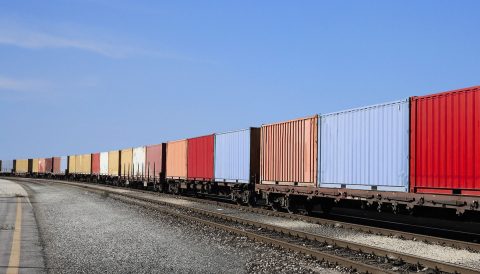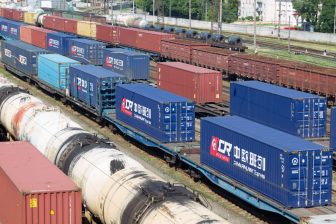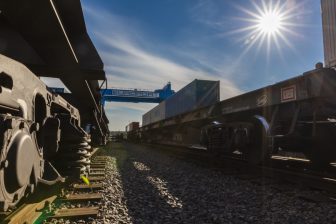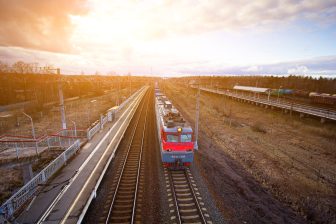
Europe and Russia volume both stepping down, where should China trains go?
The Russia situation stresses out Chinese rail freight forwarders: China-Russia rail volumes are set to drop despite the recent monopoly. Together with Europe, the westbound rail freight business is facing its downturns. One cannot help but wonder: how can we break through the situation? “Investing in eastbound service from Europe to China at any time is worthwhile”, says TopRail, and the company explains why the eastbound service could become the solution.
Minor impact on Eastbound
To compare the volume between east and west bound of China Europe trains, “westbound volume is still far greater than the eastbound, though many Chinese platform companies were not able to sustain their loyal customers due to the war in Ukraine”, says Bria Liu, the founder of TopRail. “What has made the situation even more complicated is the decoupling between China and Europe, which has resulted in the decreasing order from Europe for Chinese manufacture. However, this has no intuitive impact on the eastbound volume”, Louis Ju, vice president of Toprail, adds.
Westbound rail freight has been struck hard by ocean freight rates. For eastbound China-Europe trains, this is another story. Eastbound service remains competitive due to the huge delivery time gap between the eastbound ocean and rail services. Rail freight could be twice as fast as ocean freight; thus, many domestic customers still depend on rail. In addition, platform companies are also promoting eastbound services to such as “Xi’an, Nanjing and Changsha”, Liu explains. For platform companies promoting these eastbound services, this could also be a good strategy to diversify their business amid the current Russia monopoly, where 80 per cent of the trains are directed towards Moscow. Liu mentions Russia’s buying power is currently set to drop as the Ruble’s exchange rate sinks further. As a result, she does not expect demand from Russia and, respectively, rail freight volumes to peak this year.
Adapting to the trend
“Ocean freight eastbound service usually deliver goods starting from 40 days. This resulted in a stabler demand for imported products using China-Europe Express compared to the export,” says Liu. Such an eastbound trend has also impacted on TopRail’s strategy. Recently the company has launched a new eastbound service connecting Malaszewicz in Poland and Changsha in China. Malaszewicz will be the service’s European consolidation centre to consolidate cargoes from Hamburg, Duisburg, Mannheim, Munich, Milan and Budapest.
Why Changsha?
The train is planned to run weekly until the end of this year. After crossing the Manzhouli, it will reach Changsha. Changsha has a remarkable location significance as it is situated in the centre of China, providing mature domestic transition solutions involving inexpensive truck transiting.
Flora Jiang, head of imports at TopRail, explains further why Changsha was chosen as the terminal for this new import service. For East China, there is a high demand for eastbound products, but East China terminals located in cities like Nanjing are facing the bottleneck of warehouse capacity. “Changsha responds to the market demand amid the situation with new services to meet customer’s needs,” says Jiang. As for the product types, Liu predicts that cargoes could drift towards the sector of food and beverage, medical devices, consumer goods and new energy. However, it is not easy to stabilise this eastbound service into regular operations, but Liu says it is important to do so for the market.
Keep the eastbound service running
Liu admits that this year’s overall import volume will not be able to replicate the performance in the first quarter. A steady decline may become a reality, but “it is worthwhile to sustain the eastbound services and keep the Europe import channel open at any time”.
Liu explains that with the LCL services provided in the eastbound trains, cargoes of all sizes could benefit from the fast transit time. This is especially attractive to high-value-added-product European shippers. Though small in quantity, those shippers are the ones that have the demand for timeliness as well as sufficient buying power. They are important for eastbound service and China Europe Trains in general. As the Chinese government are gradually stepping out of the subsidy scheme, the train needs to find its own surviving mechanics in the free market. Thus “our determination in operating China Europe Trains eastbound services are reflecting the competitivity of China Europe Express services,” Liu concludes.





